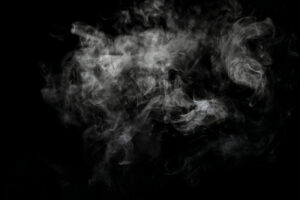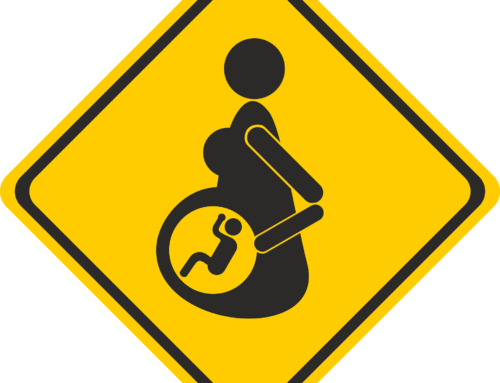Eyes fixed downwards, we turn
our backs towards the sea, as cloyingly
the fog begins to rise. Envelopes of tainted
vapours that spread their tendrils
between the weakened chains, until
every lungful is laced with silver.
— Sam Illingworth, Traces in the Fog, 2019
Traces in the Fog
 The poem, Traces in the Fog was inspired by recent research, which found that sea fog may be responsible for elevated levels of mercury in pumas along coastal habitats.
The poem, Traces in the Fog was inspired by recent research, which found that sea fog may be responsible for elevated levels of mercury in pumas along coastal habitats.
Today, like everything else, an eerie fog is going global.
One 2019 study found that foggy air masses followed by wet deposition contributed to the toxic bioaccumulation of global Mercury (Hg) levels in at least one predator population. But many studies show the deliberate release of toxins, from bacteria to diamond dust over large populations.
High atmospheric mercury levels from fog include multiple other toxins from stratospheric aerosol spraying operations. Tainted fog may come from patented technology. For instance, Patent #1338343A represents government permission for the “process and apparatus for the production of intense artificial clouds, fogs, or mists.”
The coastal puma is not the only predator that breathes tainted fog.
Bacterial Fog
Translucent blankets drape across
the land, slovenly, unwanted guests
that bring gifts of sickness and malaise.
A porous sponge that washes nosey
minks and snooping pumas with spoiled
droplets of distant ocean dew.
— Sam Illingworth, Traces in the Fog, 2019

Half a century ago, both the US and UK conducted biological warfare testing in populated areas. They released biological agents, including, Serratia marcescens and Bacillus globigii bacteria, on unsuspecting populations, and called the program, “Operation Sea Spray.”
The United Kingdom and the United States began conducting open-air experiments during World War II and continued them for decades, often in collaboration with each other and with Canada. By the late 1950s, the UK had largely ended its offensive biological program, and in 1969 the United States abruptly renounced its own offensive program. Both countries helped establish the 1972 Biological Weapons Convention, which aims to universalize the ban on such weaponry.
In the U.S., the Special Operations Division under the Army’s Chemical Corps, sprayed people like bugs. Operation Sea Spray has been the subject of research and books, though most people remain in a literal fog. After all, secret field testing is meant to remain “under cover.”
Mysterious “Fogvid-24” Spreads Sickness
 Internet journalists are drawing parallels between Operation Sea Spray and the Chemical Fog plaguing cities today.
Internet journalists are drawing parallels between Operation Sea Spray and the Chemical Fog plaguing cities today.
Since December 2024, people have been experiencing a thick lingering fog. From the U.S., U.K., and Canada, to Europe, Croatia, and other parts, the dense fog affects all forms of travel, and has affected more than 70 million people in the U.S. alone.
But more than that, it has been leaving a path of sickness (cold/flu symptoms) in its wake. If the military secretly experimented on whole cities for a period of twenty years, and wrote about it, we know what they are capable of.
By the term “Fogvid-24,” symptoms are similar to COVID; headache, runny nose, fever, fatigue, headaches, migraines, sore throat, and more.
The bacterium, S. marcescens lives in the soil, and “produces a handy, bright, blood-red pigment, a property often exploited in microbiology as a biological marker allowing scientists to track its transmission in various situations.” However, it is not the benign bacterium we may think it is. From the journal Scientific American:
Serratia marcescens has been widely found to be an opportunistic human pathogen, capitalizing on its prowess in forming tight-knit surface communities called biofilms wherever it can. It infects urethras through catheters, lungs via respirators, and premature babies by way of hospital caregivers. S. marcescens turns out to be one of the top 10 causes of all hospital-acquired respiratory, neonatal and surgical infections. —Robert Shanks, associate professor of ophthalmology at the University of Pittsburgh School of Medicine, who studies S. marcescens.
Biofilms do not respond to antibiotics since they do not have a cell wall.
Does anyone believe this is all a coincidence?
The Evidence
 In order to know how to protect ourselves, we should know what is being sprayed in our skies. On the other side of the fog, the evidence is clear.
In order to know how to protect ourselves, we should know what is being sprayed in our skies. On the other side of the fog, the evidence is clear.
- Admission by the military of continuing atmospheric dispersion testing.
- Project Cirrus: The Story of Cloud Seeding was published in 1952 by General Electric showing how to steer a hurricane.
- Airplane soot from exhaust is a source of metals in the environment.
- Control of the weather can be traced back to the 1800s via newspaper and journal vault found here, and geoengineering patents.
- NOAA continues to lead stratospheric aerosol loading projects that impact all life on Earth.
We can assume we breathe in toxins on a daily basis.
Solutions
With knowledge, we can do our part to protect the immune system that protects us, by supplementing with minerals (which displace toxins in the body), and medicinal mushrooms (which helps normalize the body).
And stay out of the fog.
Born into violence: the offspring of mixed
aggressions, traces of sickly silver
quickly infiltrate our atmosphere. Toxic
clouds that sail the zephyrs, spurting
their entrails in rhythmic pitter patter
of metallic rain that cascades upon the sea.
— Sam Illingworth, Traces in the Fog, 2019






